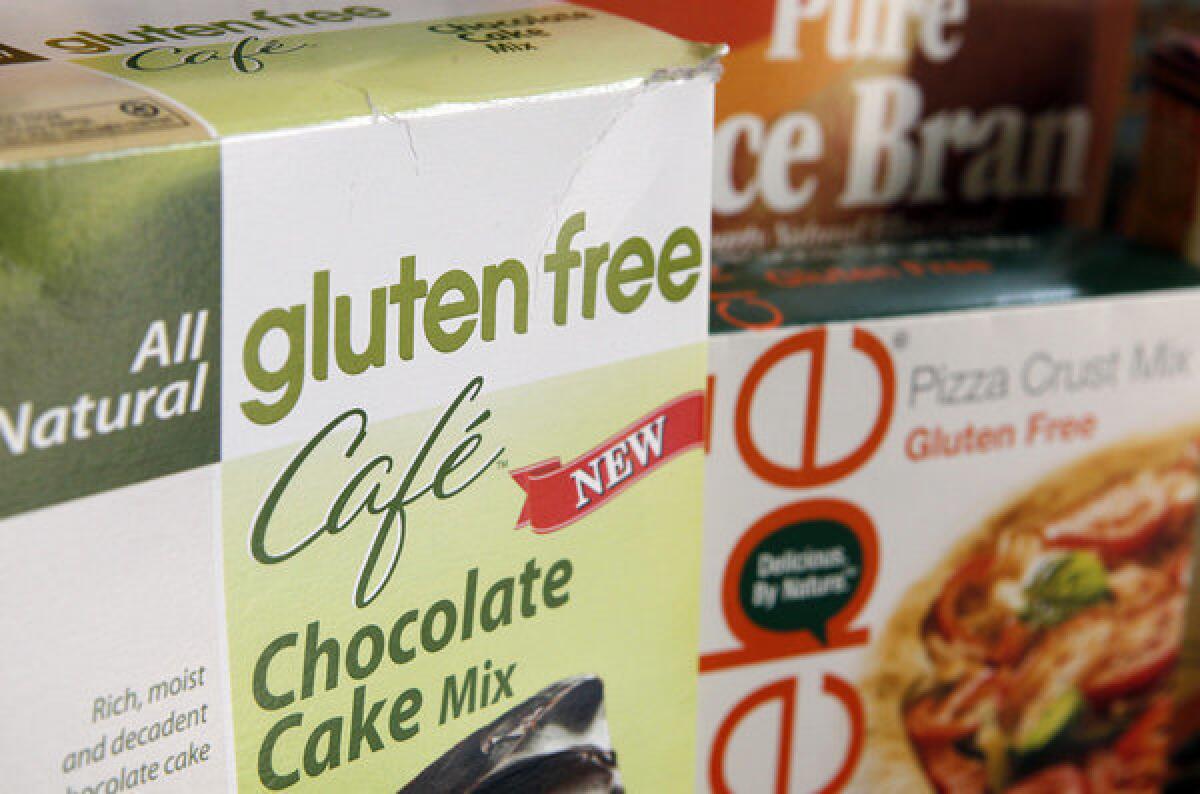FDA imposes rules for ‘gluten-free’ labeling

- Share via
The U.S. Food and Drug Administration has announced new regulations for the labeling of “gluten-free” foods, saying standardization is necessary to protect consumers with celiac disease.
The new federal regulation requires that all foods labeled “gluten-free,” “no gluten,” “free of gluten” and “without gluten” must all contain less than 20 parts per million of gluten.
“Adherence to a gluten-free diet is the key to treating celiac disease, which can be very disruptive to everyday life,” said Dr. Margaret A. Hamburg, FDA commissioner. “The FDA’s new ‘gluten-free’ definition will help people with this condition make food choices with confidence and allow them to better manage their health.”
Glutens are proteins that occur naturally in wheat, rye, barley and cross-bred hybrids of these grains, according to the FDA.
For the roughly 3 million Americans who suffer from celiac disease, foods with gluten cause antibodies to attack and damage the lining of the small intestine. This damage impedes the body’s ability to absorb nutrients from food and may lead to serious nutritional deficiencies, osteoporosis, infertility, stunted growth and miscarriages, among other conditions.
Food manufacturers will have a year to comply with the new labeling requirement. (FDA officials note that many of the products now labeled gluten-free may already meet the new standard.)
“We encourage the food industry to come into compliance with the new definition as soon as possible and help us make it as easy as possible for people with celiac disease to identify foods that meet the federal definition of ‘gluten-free,’” said Michael Taylor, the FDA’s deputy commissioner for foods and veterinary medicine.





